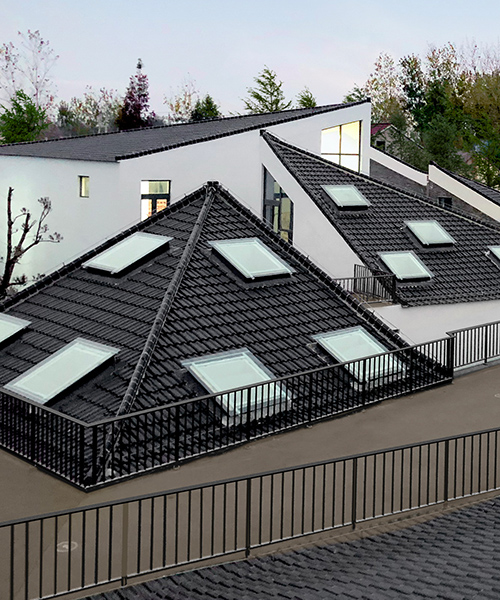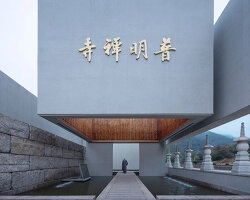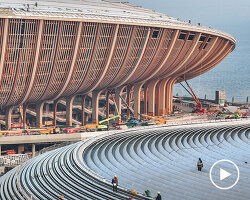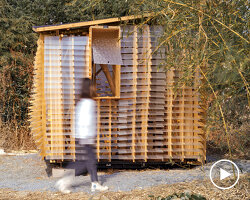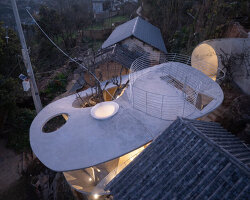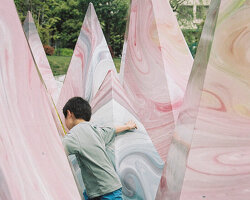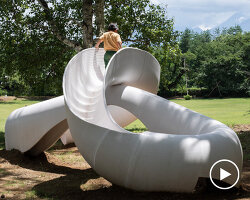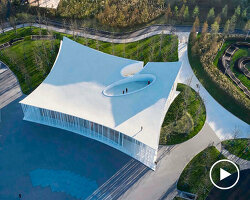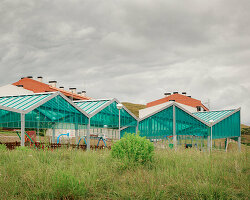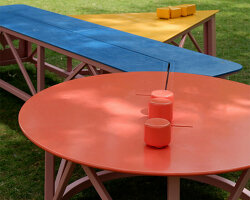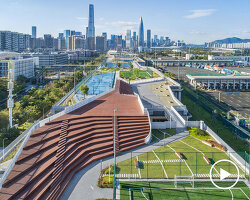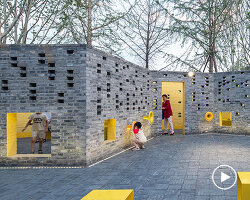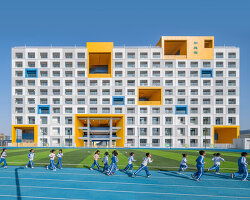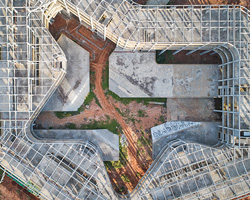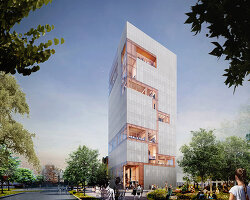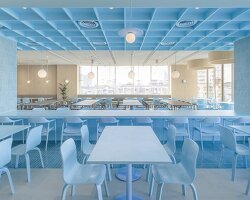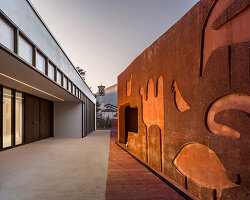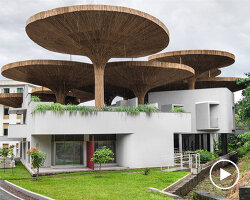beijing-based architecture firm crossboundaries introduces the beisha kindergarten, a ‘second home’ for the left-behind children. the project was initially commissioned by the local government of jiangsu, china, as the region currently faces a shortage of preschool education. this initiative places jiangsu as the first province in china to accelerate the development of high-quality education for young children throughout both its urban and rural areas.
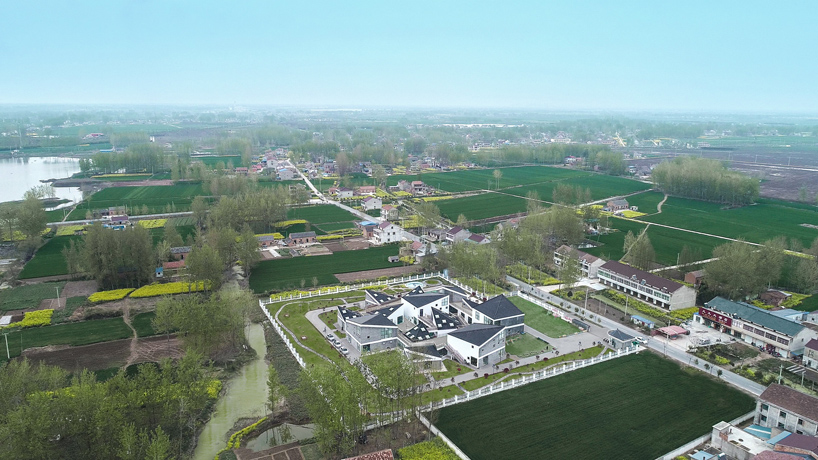
image by hao hongyi (also main image)
while the area is historically well-known for its tradition of advocating education, culture and morality, the county’s agricultural industry dominates the economy and land area. the construction of dwellings and non-agricultural architecture are thus rarely prioritized.
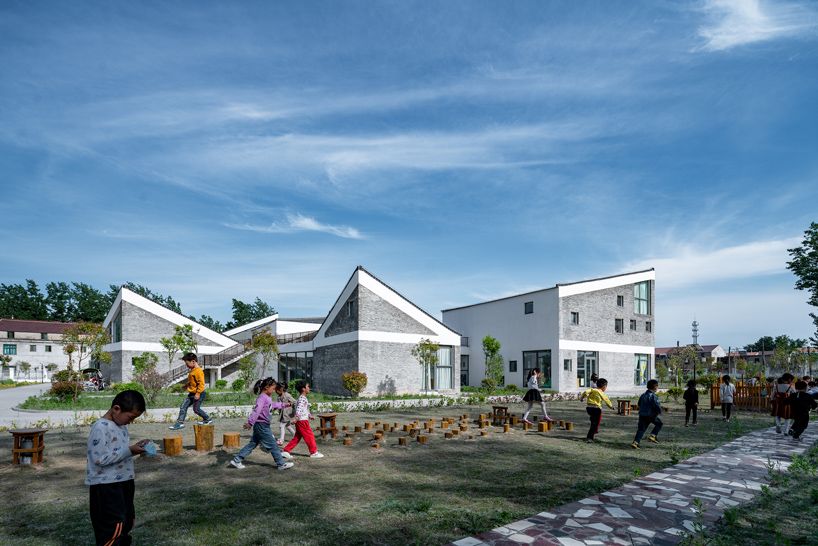
image by wu qingshan
upon approaching the crossboundaries-designed kindergarten, visitors are greeted by an endless expanse of fertile plains, the horizon blurred by the mist. this flat, boundless landscape defines the condition of most of rural jiangsu. this overwhelming flatness disintegrates slightly upon entering the village whose fabric comprises two to three story houses with pitched roofs and brick facades.
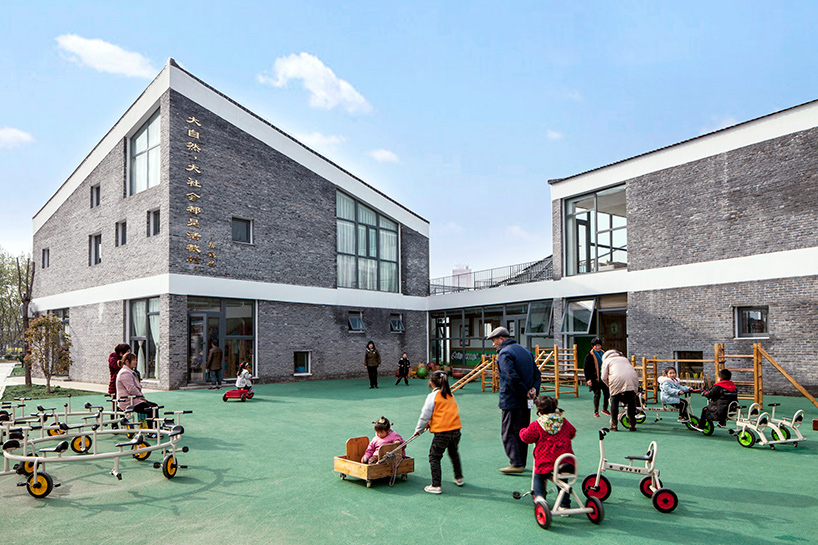
image by hao hongyi
in conversation with this language and organization, crossboundaries designs the beisha kindergarten as a ‘mini village,’ a broken down or subdivided volume expressed as a cluster of small buildings surrounding a centralized, multifunctional open area. to the design team, this integration of the exterior and interior is crucial to the early education environment and innate to the rural context.
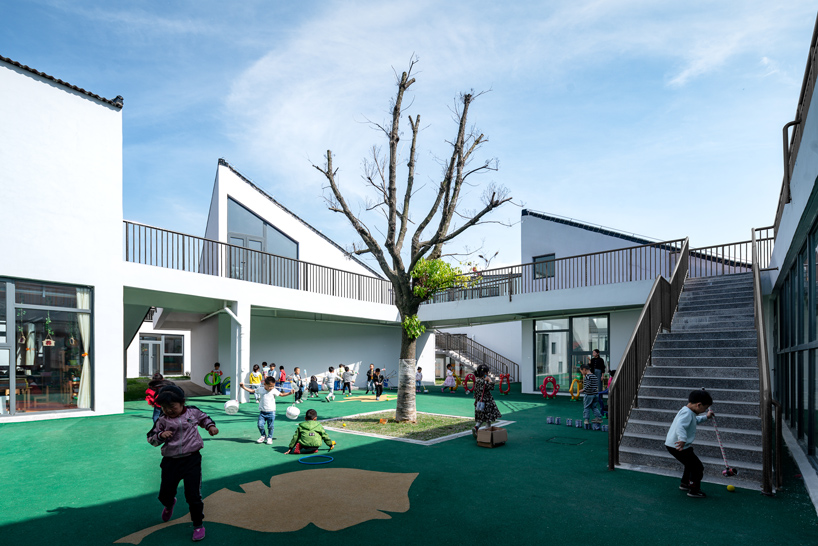
image by wu qingshan
the ‘mini village’ scale offers children a sense of familiarity while irregular relationship between each building introduces spatial novelty and encourages curiosity. entering the gate, children first discover the central outdoor space surrounded by trees. meandering between the volumes leads to the discovery of small, secret places tucked away from the main square, perfect for outdoor learning activities and playing hide-and-seek.
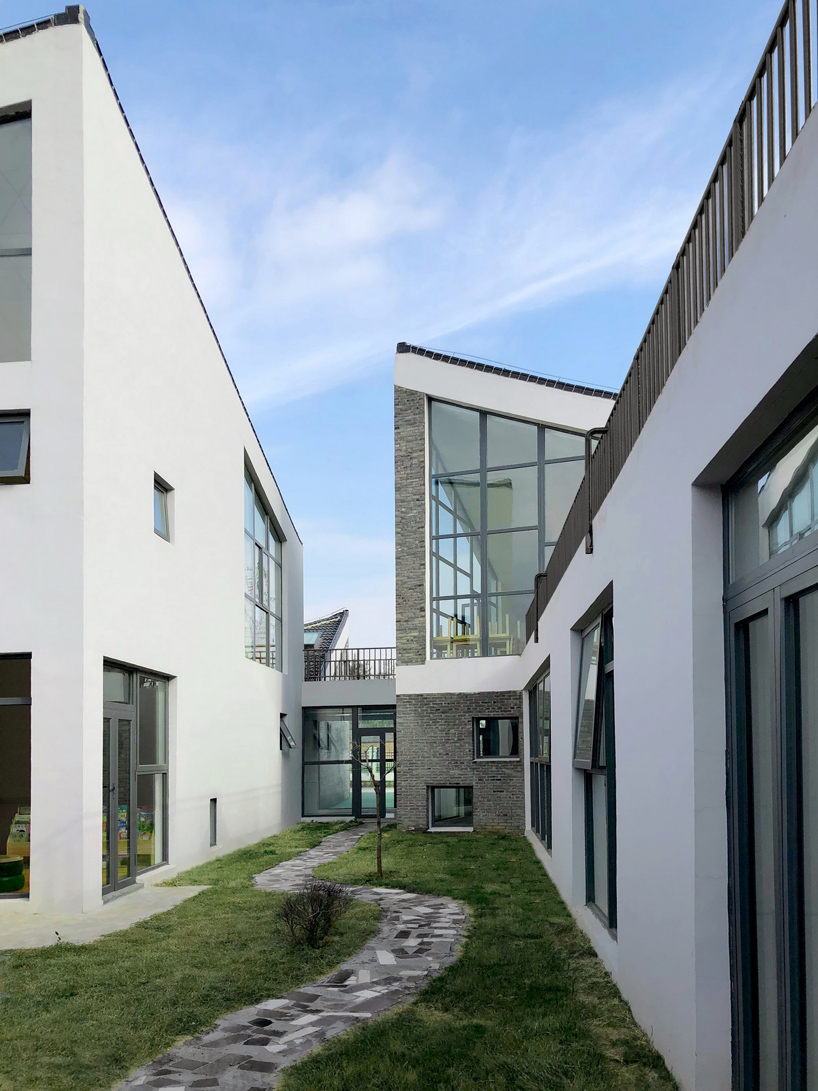
image by mini liu
the organization was developed in response to the typical school building typology characterized by a prismatic volume with a repetitive facade that dissociates from its surrounding. the design team considers this standard to be a symbol of inserted institutional architecture, rather than a place where the children would feel familiar and free.
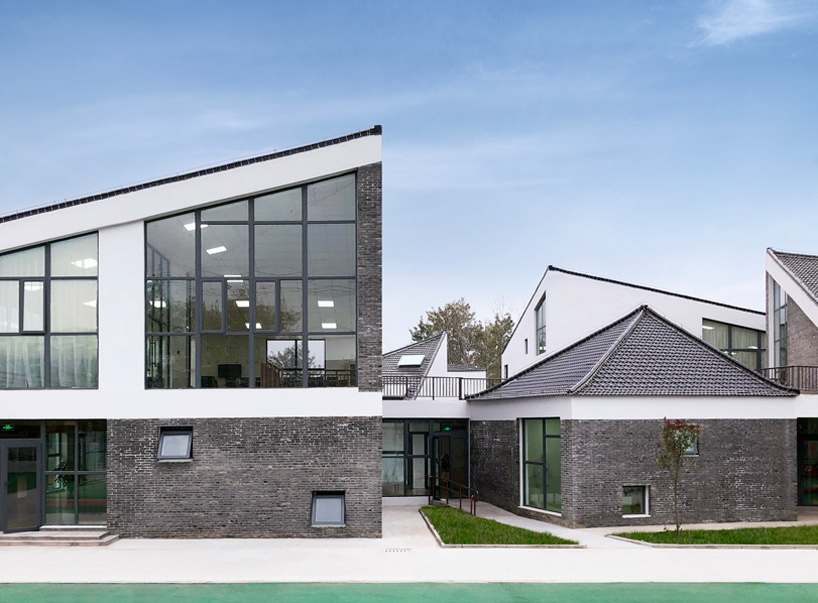
image by hao hongyi
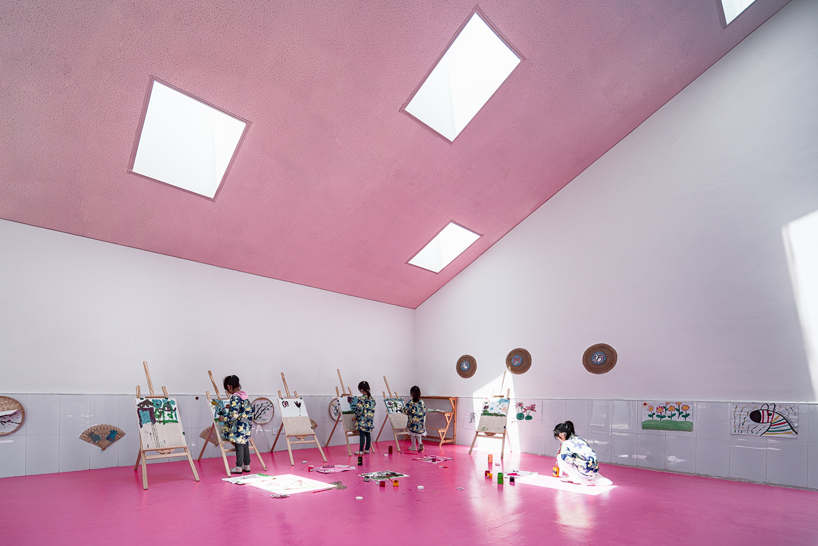
image by wu qingshan
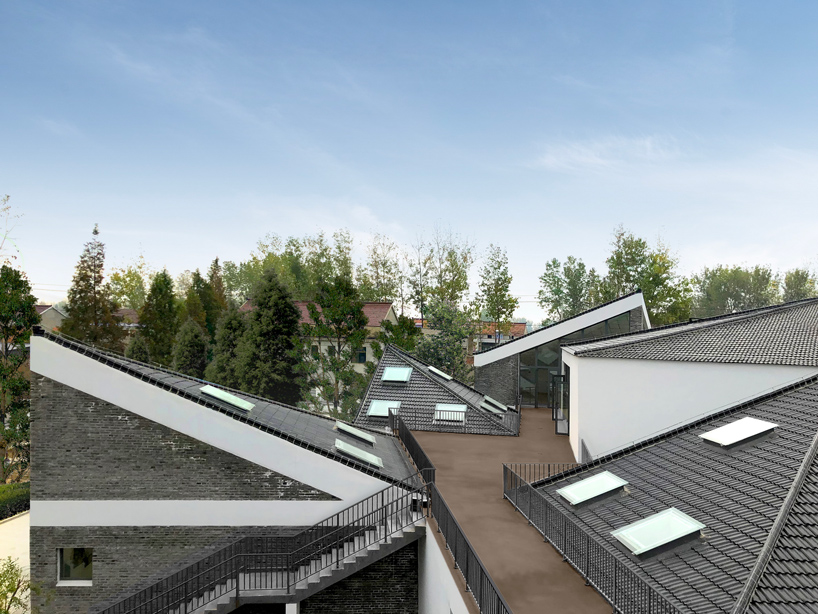
image by hao hongyi
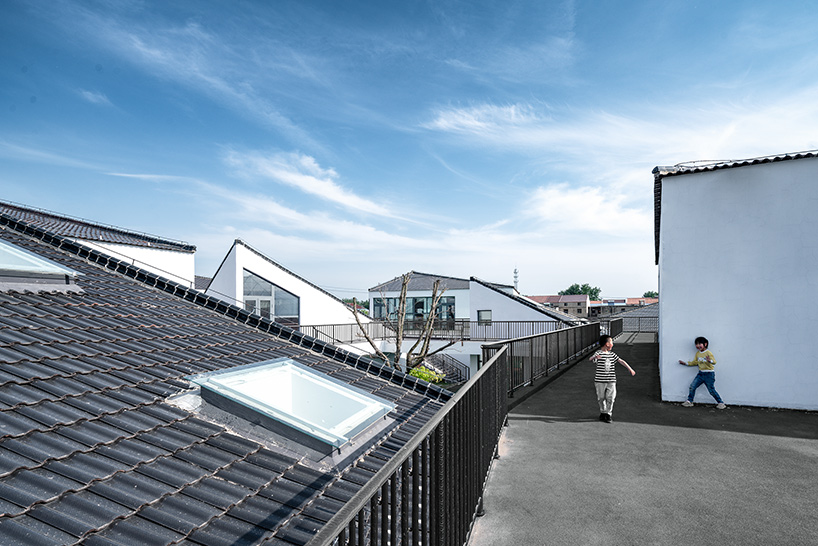
image by wu qingshan
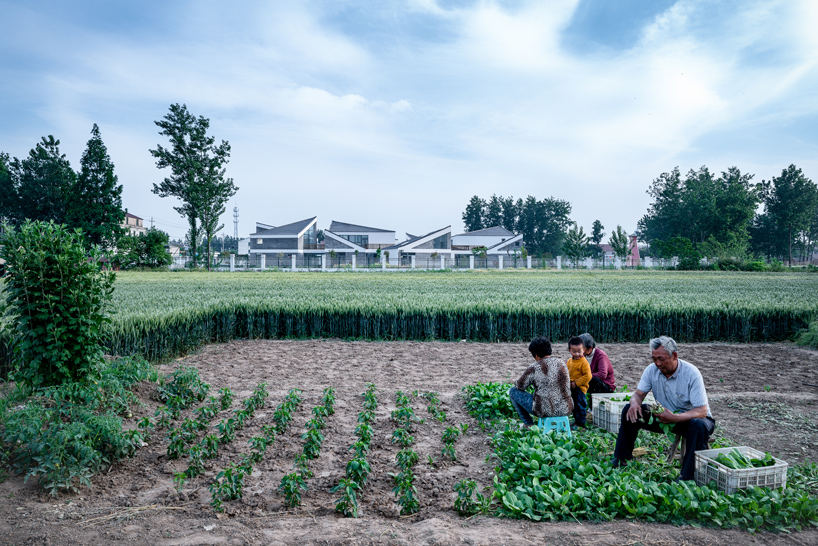
image by wu qingshan
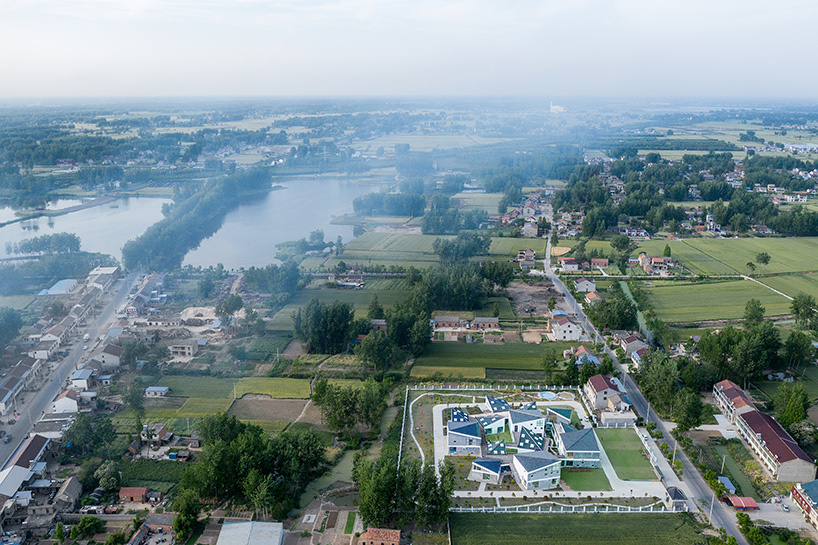
image by wu qingshan
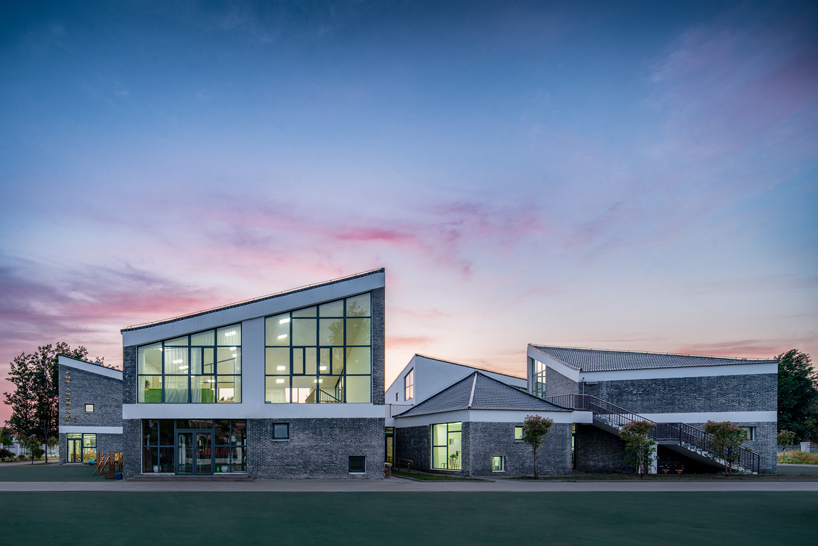
image by wu qingshan
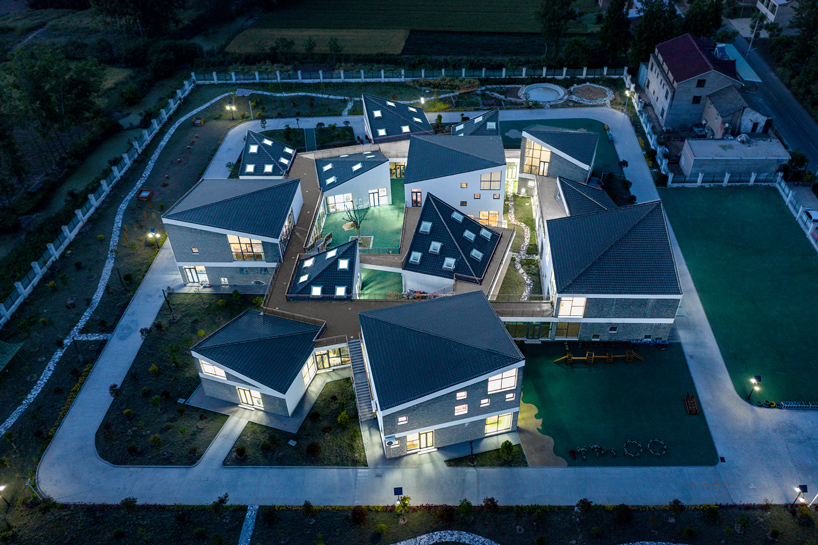
image by wu qingshan




project info:
title: beisha kindergarten
architecture: crossboundaries
location: beisha village, fu’ning county, jiangsu, china
design team: tracey loontjens, alan chou, andra ciocoiu, hao hongyi
client: education bureau of fu’ning county, jiangsu
build area: 2,815 square meters
student capacity: 300
completion: august 2018
partners in charge: binke lenhardt, dong hao
photographers: wu qingshan, hao hongyi, mini liu
